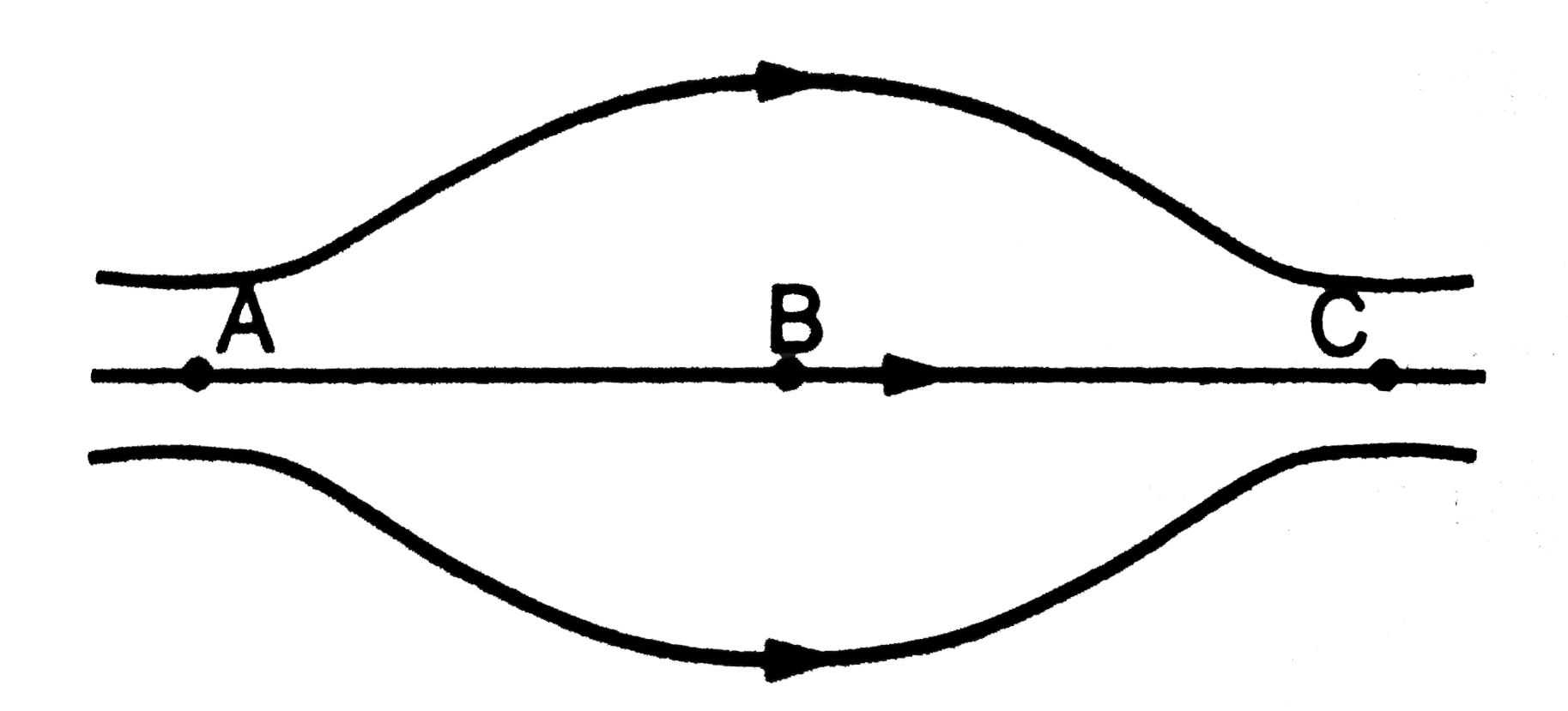Two particles A and B having charges 8.0×10−6C and −2.0×10(−6)C respectively are held fixed with a. separtion of 20cm. Where should a thired charged. particle be placed so that it dose not experience a net electric force?.Solution in Tamil
As the net electric force on C should be equal to
zero, the force due to A and B must be opposite in
direction. Hence, the particle should be placed on the
line AB. As A and B have charges of opposite signs, C
cannot be between A and B. Also, A has larger
magnitude of charge then B. Hence, C should be placed closer to B then A. The situation is shown in figure

Suppose BC=xandthechar≥onCisQ.
The force due to A=(8.0×10−6C)Q4πε0(20cm+x)2
The force due to B=(2.0×10−6C)Q4πε0x2
They are oppositely directed and to have a zero
resultant, they should be equal in magnitude. Thus,
8(20cm+x)2=2x2
or 20cm+xx=2, giving x = 20cm.
Topper's Solved these Questions
- BOOK - HC VERMACHAPTER - ELECTRIC FIELD AND POTENTIALEXERCISE - question for short answer14videos
ELECTRIC FIELD AND POTENTIAL
- BOOK - HC VERMACHAPTER - ELECTRIC FIELD AND POTENTIALEXERCISE - Objective 19videos
ELECTRIC FIELD AND POTENTIAL
- BOOK - HC VERMACHAPTER - ELECTRIC FIELD AND POTENTIALEXERCISE - Exercises75videos
ELECTRIC FIELD AND POTENTIAL
- BOOK - HC VERMACHAPTER - ELECTRIC CURRENT THROUGH GASESEXERCISE - Exercise23videos
ELECTRIC CURRENT THROUGH GASES
- BOOK - HC VERMACHAPTER - ELECTROMAGNETIC INDUCTIONEXERCISE - EXERCISE98videos
ELECTROMAGNETIC INDUCTION
Similar Questions
The charge on a proton is +1.6X10(−19)C and that on an
. electron is −1.6X10(−19)C. Does it mean that the electron
. has a charge 3.2X10(−19)c less than the charge of a
. proton?04:38View SolutionFigure shows some of the electric field lines correspoinding to an electric field. The figure suggests that
 05:43View Solution
05:43View SolutionFind the dimensional formula of ε0 .
04:40View SolutionA discharge tube contains helium at a low pressure. A large potential difference is applied across the tube. Consider a helium atom that has just been ionized due to the detachment of an atomic electron. Find the ratio of the distance travelled by the free electron to that by the positive ion in a short time dt after the ionization.
02:33View SolutionCalculate the dimensions of (a) ∫→E.d→l,(b)vBlanddΦ0dt. The symbols have their usual meanings.
09:14View SolutionTwo chargea 2.0xx10^(-6) C are placed at a separation of 10 cm. where should a third charge be placed such that it experiences no net force due to these charges.
03:49View SolutionSuppose the second charge in the previous problem is −1.0×10−6C. Locate the position where a third charge will not experience a net force.
07:48View SolutionTwo particles A and B having charges of +2.00×10−6C and of −4.00×10−6 respectively are held fixed at a separation of 20.0 cm . Locate the point(s) on the line AB where (a) the electric field is zero (b) the electric potential is zero.
07:06View SolutionA charged partical having a charge of −2.0×10−6C is placed close to a nonconducting plate having a surface charge density 4.0 xx 10^(6) C m^(-2). Fine the force of attraction between the particle and the plate.
05:30View Solutionसंलग्न चित्रों (a व b) में समान रूप से आवेशित तीन कण A, B व C दिखाए गए है। कण A, द्वारा कण B पर आरोपित वैद्युत बल 2.0×10−6 न्यूटन है। प्रत्येक चित्र में ज्ञात कीजिए: (i) कण C द्वारा कण B पर आरोपित वैद्युत बल तथा (ii) कण B पर नैट बल।
 05:39View Solution
05:39View SolutionA charged particle of mass 3 xx 10^(-6) kg is held stationary in spacing in an electric field of strength 10^(6) NC^(-1) directed vertically downwards. The charge on the particle is ( g = 10 ms^(-2))
05:14View SolutionTwo-particles A and B having charges 8×10−6Cand−2×10−6C respectively are held fixed with a separation of 20 cm. Where should a third charged particle C be placed so that it does not experience a net electric force?
02:08View Solutionदो स्थिर कणो A तथा B के आवेश क्रमशः 8×10−6 कूलॉम तथा −2×10−6 कूलॉम है, इनके बीच की दूरी 20 सेमी है। तीसरा आवेशित कण कहाँ रखा जाए कि वह कोई बल अनुभव न करे?
 05:56View Solution
05:56View SolutionTwo chargea 2.0×10−6C and 1.0×10−6C are placed at a separation of 10 cm. where should a third charge be placed such that it experiences no net force due to these charges.
02:05View SolutionSuppose the second charge in the previous problem is −1.0×10−6C. Locate the position where a third charge will not experience a net force.
01:05View SolutionTwo particles A and B having charges of +2.00×10−6C and of −4.00×10−6 respectively are held fixed at a separation of 20.0 cm . Locate the point(s) on the line AB where (a) the electric field is zero (b) the electric potential is zero.
04:29View Solution

